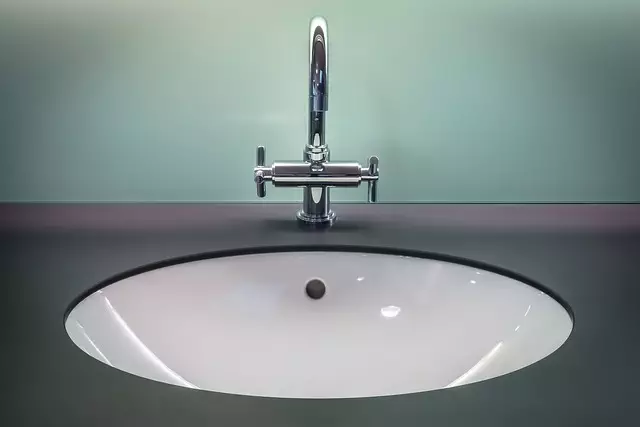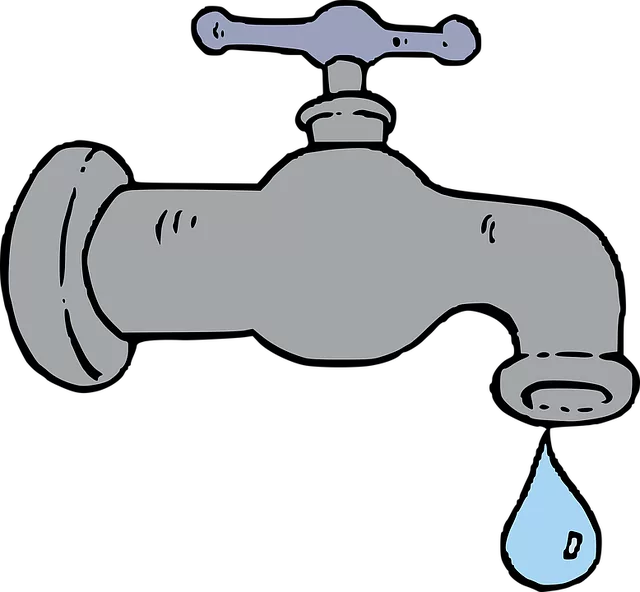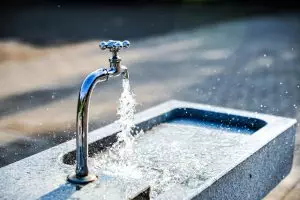This text provides a comprehensive guide to repairing leaky or stuck faucet handles, emphasizing proper identification of issues like worn gaskets, loose connections, or damaged cartridges. It recommends tools for repair and suggests keeping replacement parts specific to the faucet model on hand. After shutting off water supply valves, disassemble the handle to inspect internal components, replace damaged parts, and reassemble. Thorough testing after repair is crucial. For persistent issues, consult a professional plumber. Regular maintenance, including inspection and lubrication, prevents future problems.
“Faucet handle repair is a valuable skill every homeowner should possess, as it’s one of the most common and frustrating issues in any kitchen or bathroom. This comprehensive guide addresses all things faucet repair, from identifying typical problems like leaky handles and low water pressure to a step-by-step breakdown of disassembly and replacement.
We’ll walk you through gathering the right tools, understanding your faucet type, and providing advanced troubleshooting for persistent challenges. Learn these simple techniques, and you’ll be well-equipped to handle future repairs efficiently.”
Understanding Common Faucet Issues

Many faucet issues are common and relatively easy to address, making faucet repair a DIY project for most homeowners. Some of the most frequent problems include leaks at the base or tip, where the handle meets the spout, and difficulties with the handle’s movement, such as sticking or unresponsive operation. These issues can be caused by various factors: worn-out gaskets or O-rings, loose connections, damaged cartridges, or simply calcified mineral buildup over time.
Identifying the specific issue is the first step towards effective faucet repair. Leaks, for instance, might require replacing the washer or gasket, while a stuck handle could be due to dirty or broken parts inside the faucet’s mechanism. Regular maintenance, such as cleaning and lubricating the parts, can prevent many of these issues from occurring in the first place.
Gathering the Necessary Tools and Materials

Before tackling any faucet repair, it’s crucial to gather the right tools and materials. For most routine faucet issues, a basic toolkit will suffice. This includes a wrench or pliers for unscrewing parts, a new O-ring or washer if replacing worn-out components, and pipe compound or thread sealant for sealing connections. Make sure your workspace is well-lit and have access to the under-sink area where most faucets have their primary connections.
When it comes to faucet repair, having the right supplies makes all the difference. Consider investing in a multi-purpose toolset designed for plumbing tasks if you frequently deal with such repairs. Additionally, keep a stock of replacement parts specific to your faucet model, as these can often be found online or at hardware stores, saving you time and hassle during future repairs.
Identifying the Type of Faucet You Have

Identifying your faucet’s type is a crucial first step in any repair process. Different faucets have distinct designs and components, each requiring tailored care. Whether it’s an antique claw-foot or a modern touchless model, understanding its unique features will guide you in selecting the right tools and replacement parts for effective faucet repair.
Examine the faucet’s handle, spout, and base for clues. Traditional faucets often feature a single lever or two separate handles. In contrast, contemporary designs might include sensor-activated mechanisms or pull-down spouts. Each style has its own set of repairs, from simple seal replacements to complex electronic calibrations, so knowing your faucet’s type is essential for successful faucet repair.
Disassembling the Faucet

When tackling a faucet handle repair, disassembling the faucet is often the first step. This process varies depending on the type and model of your faucet, but many share similar components. Start by turning off the water supply valves located under the sink to avoid leaks during the disassembly. Then, with the help of a wrench or pliers, carefully remove the handle and any visible parts, such as the washer or seal. This allows for inspection and replacement of damaged or worn-out components, addressing common faucet repair issues effectively.
Once you’ve separated the handle from the spout, you’ll likely discover various internal parts like the stem, disc, or cartridge. These are the key elements responsible for controlling water flow and temperature. Carefully lay out each part to understand their functions and identify any damage or debris that might be causing the initial faucet repair issue. This meticulous approach ensures a thorough understanding of your faucet’s inner workings, facilitating a successful repair.
Replacing Worn-Out Parts: Step-by-Step Guide

When it comes to faucet repair, one of the most common issues is worn-out parts. If your faucet handle is sticky, leaks, or doesn’t turn smoothly, it might be time for a replacement. The good news is that replacing these parts is usually a straightforward process. Here’s a step-by-step guide to help you fix your faucet handle:
1. Turn off the water supply. Before you begin, make sure to close both the hot and cold valve under the sink to avoid any water leaks. This ensures a safe work environment and prevents damage from excess water.
2. Remove the old handle. Use a wrench or pliers to unscrew the old faucet handle from the base of the faucet. Take note of how it is connected, as different faucets might have unique mechanisms. Once removed, inspect the inner parts for any signs of wear or damage.
3. Identify and replace worn-out components. Common parts that need replacement include O-rings, washers, and seals. These parts can be found at most hardware stores. Install the new parts according to their respective functions, ensuring they fit snugly without being too tight.
4. Reassemble the faucet handle. Place the new handle back onto the faucet base, securing it with screws or pins as per the manufacturer’s instructions. After reassembling, open the water valves and test the handle for any leaks or proper functionality.
Tightening and Testing the Repaired Faucet

After successfully replacing or repairing the faucet’s damaged parts, the next step is to ensure it functions correctly by tightening and thoroughly testing the repaired faucet. Begin by tightening all the connections using a wrench or pliers. Ensure that every part is securely in place; this prevents leaks and ensures the faucet’s longevity. Once tightened, turn on the water supply and check for any leaks at the base of the faucet, where the handle meets the spout. If there are no leaks, you’ve successfully completed your faucet repair.
Advanced Troubleshooting for Persistent Problems

If basic troubleshooting steps haven’t resolved your faucet repair issue, it’s time to delve deeper. Persistent problems could indicate a more complex fault within the faucet’s mechanism. Start by inspecting the cartridge or valve assembly for any signs of damage or debris. Sometimes, a simple cleaning or replacement can fix long-standing issues. Check for leaks around these components and ensure all parts are securely fastened.
For further advanced troubleshooting, consider the water supply lines. Leaks or inadequate pressure could be to blame. Test the water flow and pressure at both the faucet and the main water supply. If problems persist, consult a professional plumber, as issues may lie with the plumbing system itself, requiring more extensive repairs beyond simple faucet repair.
Preventive Maintenance Tips for Future Repairs

Regular maintenance is key to avoiding future faucet repair headaches. Start by checking your faucets periodically for any signs of damage, leaks, or unusual noises. A simple inspection can often catch issues early on, preventing more complex problems down the line.
Keep a supply of replacement parts handy, such as washer and O-rings, which are common culprits in faucet leaks. Lubrication is another preventative measure; apply a light coat of lubricant to the faucet handle and stem to ensure smooth operation and prevent stiffening over time. This simple step can significantly extend the lifespan of your fixtures, saving you time and money on future faucet repair tasks.
